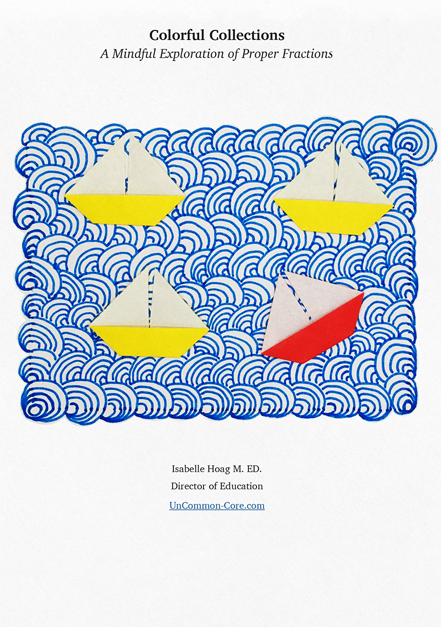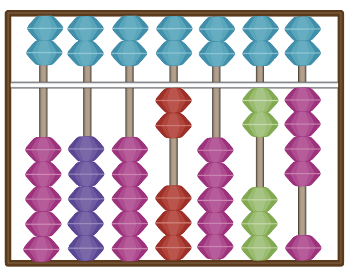
Introduce Your Students to Calculating with a Chinese Abacus
Learning to use an abacus is more than just a great way to prepare for the Chinese new year celebrations. It will boost your students’ mental math abilities, concentration level, and their understanding of basic mathematical operations.
An abacus tracks the results of mental calculations. This leaves the working memory free to continue reckoning. Large math problems are broken down into a series of simple math facts. Each math fact is tackled one at a time, in the proper order. When the results of all the tiny math facts have been recorded, the answer to the entire problem is shown by the location of the beads on the rods.
Follow the instructions below to fill your classroom with the sounds of beads snapping into position and kids focused on math. There are more links at the end of each section and at the end of this post.
Using a Chinese Abacus
A Chinese abacus has two beads on the top deck, heaven, and five beads below, earth. It is also called a 2/5 abacus or, in Chinese, suan pan. Each of the beads on the upper deck has a value of five. The beads on the lower deck have a value of one. The beam extends horizontally between the upper and lower decks. Beads are only counted when touching the beam or moved as close to the beam as possible. The rod farthest to the right shows the unit’s place. From there the value of each rod to the left increases by a magnitude of ten.
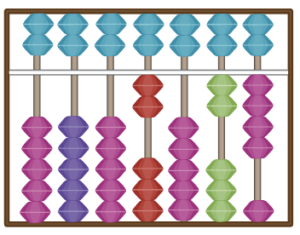
The number shown on the abacus above has a two in the thousand’s place, nothing in the hundred’s place, a two in the ten’s place and a four in the unit’s place: It shows the year of the wood dragon; 2024.
- Introduction and vocabulary ~ The Abacus
- Free interactive Chinese abacus – Alcula
- Abacus: Chinese Wisdom at your Fingertips – Chinese Master (2 min)
Counting on a Chinese Abacus
Using a 2/5 abacus to count is almost as easy as 1,2,3!
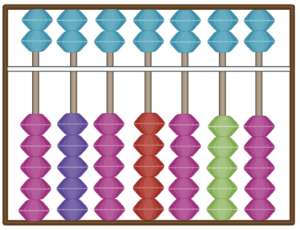
The abacus above shows the number zero. When all the beads are moved far away from the beam, then the abacus has been ‘zeroed out.’
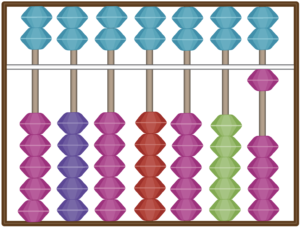
Moving the topmost bead from the lower deck up to the beam shows the number one. Trained abacus teachers focus on specific finger motions when moving beads. Students who consistently use these gestures are able to calculate faster.
I am not trained as an abacus teacher. Our focus today is on building understanding and practicing mental math rather than speed.
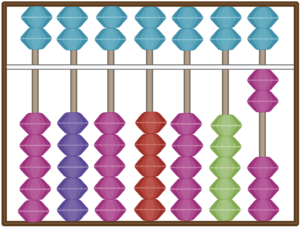
As you would expect, the number of beads that touch ~ or have been moved as close as possible to ~ the beam is multiplied by their value:1 for those on the lower deck, 5 for those on the upper deck, and the magnitude of ten assigned to the rod being used. This system is one of the reasons why a 2/5 abacus is extremely useful in modern classrooms.
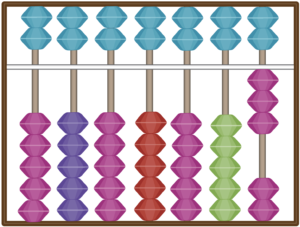
The abacus above shows three. Bringing another bead up will show four.
When all five of the beads on the lower deck have been moved up, they are immediately switched for a single bead from the top on the same rod. Either of these configurations show the number five.
Learn More about Counting on an Abacus
- Abacus Basics – Helpful Games – after you choose your level, respond to the prompts that appear on the top of the page. Use your mouse/finger to move the beads into place.
- Different Types of Abacus – TheoryFY – overview of various types with interesting facts and graphics. (4 min)
Adding on a Chinese Abacus
James T. Kirk, the future captain of the Enterprise will be born 209 years from 2024. What is the sum of 2024 and 209? Let’s calculate the year of his birth using an abacus.
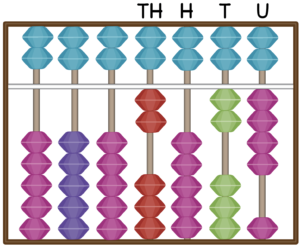
First, show 2024 on the abacus. When using an abacus, sums are calculated from left to right, unlike the standard mathematical algorithm for addition. In the thousand’s place, the math fact to consider is 2+0=2. There is no need to make changes to the beads in the thousand’s place at this point.
Looking at the hundred’s place, there is a zero shown on the abacus to start with. This zero is combined with two and the math fact is 0+2=2. Two beads are moved up in the hundred’s place.
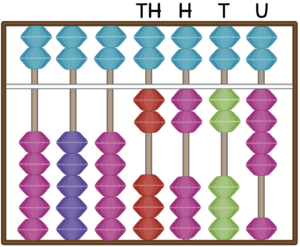
Moving to the ten’s place, the math fact to be considered is 2+0=0 again. This leaves the two beads which were there at the start of our work in place with no changes at this point.
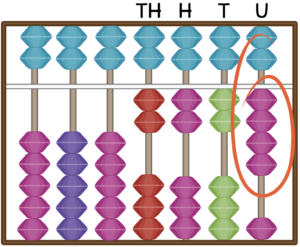
Finally, we turn to the math fact in the unit’s place. To start, there are four beads being counted. The math fact is 4+9=13. Since 13 is a two digit number, we will have to move beads in the ten’s place as well as in the unit’s place. We move another green bead closer to the beam to account for the ten in 13. Then we move one of the pink beads down to show that 3 remain in the unit’s place.
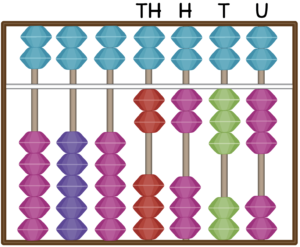
At the end of our calculations, the abacus reveals the year of James Kirk’s birth to be 2233.
Learn More about Adding on an Abacus
Moving left to right through a complex addition with carrying problem may seem counterintuitive at first. Yet, many of us use this strategy when calculating in our minds. This kind of ‘backwards’ adding technique requires a strong understanding of place value.
- Abacus Addition – Helpful Games – Read the number shown on the abacus. Use mental math to add that amount with the number in the prompt. Click and drag the beads to show the correct sum.
- Left to Right Addition – Shelley Gray Teaching
- Speed Addition: Left to Right Approach – Burning Math
Subtracting on a Chinese Abacus
Leonardo da Vinci was born on April 15, 1452. Which anniversary of his birthday will we celebrate this year?
What is 2024 – 1452? Let’s use the abacus to calculate.
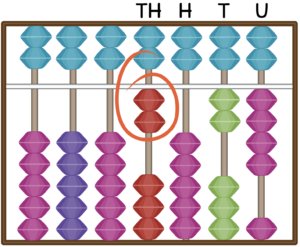
Start by showing the minuend, the number to be reduced, on the abacus. Again we start with 2024 the year of the wood dragon. Then we focus on the two in the thousand’s place. The math fact being considered is 2-1=1. Move one of the red beads on the thousand’s rod down.
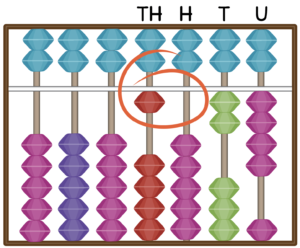
Since there is zero in the hundred’s place, our calculations will have to include the bead in the thousand’s place. The next math fact to consider is 10-4=6. The result is to move the single bead in the thousand’s place down and show six in the hundred’s place.
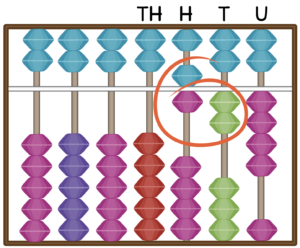
Looking at the ten’s place, we can’t take 5 from 2 so we turn to the hundred’s place. The math fact to solve now becomes 12-5=7. Move the pink bead in the hundred’s place down and show seven in the ten’s place.
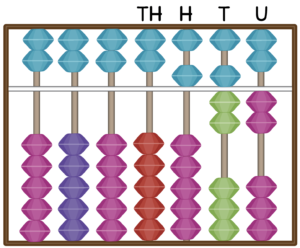
After subtracting two from four in the unit’s place, the number remaining on the abacus tells us that on April 15, 2024 we will celebrate the 572nd anniversary of Leonardo da Vinci’s birth.
Learn More about Subtracting on an Abacus
- Abacus Subtraction – Helpful Games – Read the number shown on the abacus. Use mental math to subtract the number shown in the prompt. Click and drag the beads to show the correct difference.
Links to More Resources
- Interactive School Abacus with horizontal bars – toy theater – interactive abacus
- Chinese Abacus Simulator – Technical Computer Science
- Colorful Plastic Abaci for Kids – China Sprout – Seems as if they’re out of blue (Check shipping rates!!)
- How the Abacus Can Help Students Learn Math – Education Week (1:40 min)
- Everything (my title, not theirs!) including Multiplication and Division on an Abacus – Abacus Academy
- Using the Exchange Method – Abacus tutorial (2 min)
- Japan’s Ancient Secret to Better Cognitive Memory – BBC (6 min) the first 1 min is amazing!
The first time I used an abacus I felt my mathematical logic sliding, tilting and, then flipping back to front. However, with more experience I was elated. I felt as if I had personally invented an entirely new way to think about doing math. Actually, using an abacus to calculate is an ancient practice that is still relevant today. The more I learn, the more I want to share.
UnCommon-Core.com is not an affiliate marketer at this time.
Share This Story, Choose Your Platform!
Download Colorful Collections:
A Mindful Exploration of Proper Fractions
Help your students make sense of fractions.
I started teaching in 1987, which means I’ve collected many tips and tricks along the way. In this ebook, I share concepts, strategies, and classroom materials to help you make math sticky.
Along with this useful ebook, you will receive weekly emails from StickyMath@UnCommon-Core.com. I send information like: teacher tips, educational ideas, book reviews, curated lists, reviews of educational sites, and free first drafts of products that I’m creating for my TPT store. That way, you get helpful ideas and free stuff, while I get some feedback before I finalize products and put them up for sale.
I value your privacy. I will never sell your information. You may unsubscribe at any time.
All the best!
Isabelle
Isabelle Hoag M. Ed.
